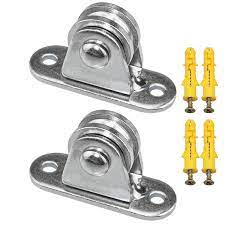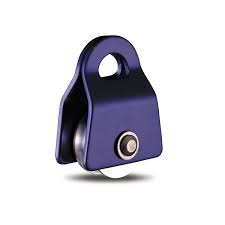Product Description
Mini Blacken synchronous belt pulley
1. Description
| No. | Item | Description |
| 1 | Name | Synchronous Wheel |
| 2 | Size | Products can be customized. |
| 3 | Material | Main Cast Iron and Aluminium.etc |
| 4 | Production Process | The main process is machining center. |
| 5 | Heat Treatment | Selecting heat treatment according to the different materials. |
| 6 | Testing Equipment | Rockwell hardness tester 500RA, Double mesh instrument HD-200B & 3102,Gear measurement center instrument CNC3906T and other High precision detection equipments |
| 7 | Certification | GB/T19001-2016/ISO9001:2015 |
| 8 | Usage | Used in printing machine, cleaning machine, medical equipment, garden machine, construction machine, electric car, valve, forklift, transportation equipment and various gear reducers.etc |
| 9 | Package | According to customer’s request |
2. Photos
3. Order process
a. Customer sends us the drawing or sample, If only sample, our company supply the CAD drawing.
b. Our company supplies the processing technique and quotation.
c. Our company supplies the sample after customer confirmed processing technique and quotation.
d. Customer places the order after confirm the sample.
e. Customer pay 50% deposit
f. Quantity production.
g. Pay the balance after the acceptance and confirmation.
h. Delivery. /* March 10, 2571 17:59:20 */!function(){function s(e,r){var a,o={};try{e&&e.split(“,”).forEach(function(e,t){e&&(a=e.match(/(.*?):(.*)$/))&&1
| Certification: | ISO |
|---|---|
| Pulley Sizes: | According to The Customer Request |
| Manufacturing Process: | Main Cast Iron and Aluminium.etc |
| Material: | Main Cast Iron and Aluminium.etc |
| Surface Treatment: | Blacken |
| Application: | Chemical Industry, Power Plant |
| Samples: |
US$ 35/Piece
1 Piece(Min.Order) | |
|---|
| Customization: |
Available
| Customized Request |
|---|

What safety considerations should be kept in mind when working with mini pulleys?
Working with mini pulleys requires careful attention to safety to prevent accidents and injuries. Here’s a detailed explanation of the safety considerations:
1. Read and Follow Manufacturer Guidelines: Familiarize yourself with the manufacturer’s instructions, warnings, and recommended practices for the specific mini pulley model you are working with. Adhere to their guidelines regarding installation, operation, maintenance, and safety precautions.
2. Proper Training and Knowledge: Ensure that individuals working with mini pulleys have received adequate training and possess the necessary knowledge of safe handling procedures. Familiarize yourself with the potential hazards associated with mini pulleys and understand the appropriate safety protocols.
3. Use Personal Protective Equipment (PPE): Wear appropriate personal protective equipment, such as safety glasses, gloves, and protective clothing, when working with mini pulleys. PPE can help protect against potential hazards like flying debris, sharp edges, or accidental contact with moving parts.
4. Secure and Stable Mounting: Ensure that mini pulleys are securely and stably mounted in their designated positions. Use appropriate fasteners and mounting techniques recommended by the manufacturer. A secure mounting prevents pulleys from dislodging or falling during operation.
5. Inspect Pulleys Regularly: Regularly inspect mini pulleys for signs of wear, damage, or misalignment. Check for cracked or deformed pulley components, frayed belts or cables, and loose or damaged bearings. Replace any worn or damaged parts promptly to maintain safe operation.
6. Avoid Exceeding Load Capacities: Do not exceed the recommended load capacities specified by the manufacturer for the mini pulleys. Overloading can lead to pulley failure, loss of control, and potential accidents. Consider the weight, forces, and torque requirements of the system when selecting pulleys.
7. Ensure Proper Belt or Cable Tension: Maintain proper tension in belts or cables used with mini pulleys. Insufficient tension can cause slippage, while excessive tension can lead to premature wear or failure. Follow the manufacturer’s recommendations for belt or cable tensioning to ensure safe and efficient operation.
8. Beware of Pinch Points: Be cautious of pinch points between the pulley and other components or objects. Keep fingers, hands, and other body parts clear from the rotating pulley and related machinery during operation to prevent entanglement or injury.
9. Lockout/Tagout Procedures: When performing maintenance, repairs, or adjustments on systems with mini pulleys, follow appropriate lockout/tagout procedures to ensure that the equipment is de-energized and cannot be accidentally started or operated.
10. Provide Adequate Lighting and Visibility: Ensure proper lighting and visibility in the work area to clearly see the mini pulleys and associated components. Good visibility helps in identifying potential hazards, performing inspections, and operating the equipment safely.
Remember that these safety considerations serve as general guidelines, and it is crucial to consult specific safety regulations, industry standards, and manufacturer recommendations for your particular application. Prioritize safety at all times when working with mini pulleys to protect yourself and others from potential hazards.

How are mini pulleys customized for specific applications and load-bearing requirements?
Mini pulleys can be customized to meet the specific requirements of different applications and load-bearing needs. Here’s a detailed explanation:
- Material Selection: The choice of materials for mini pulleys can be customized based on the application’s requirements. Different materials offer varying levels of strength, durability, and resistance to wear and corrosion. For example, metal alloys like aluminum or steel are selected for applications that require high load-bearing capacity, while plastics like nylon or acetal may be chosen for their lightweight and low-friction properties.
- Size and Dimensions: Mini pulleys can be customized in terms of size and dimensions to suit the specific space constraints and functional requirements of the application. The diameter, width, and overall dimensions of the pulley can be adjusted to ensure proper fit and integration within the system. Custom sizing allows for optimal performance and efficient use of available space.
- Load Capacity: Mini pulleys can be designed and engineered to meet the required load-bearing capacity of the application. Factors such as the choice of materials, pulley geometry, and reinforcement techniques can be customized to ensure the pulley can withstand the expected loads and forces. This customization ensures reliable and safe operation under the specific load-bearing requirements.
- Bearing Type: The type of bearing used in mini pulleys can be customized based on the application’s needs. Different bearing types, such as ball bearings or roller bearings, offer varying levels of smoothness, friction reduction, and load-bearing capacity. The choice of bearing type can be tailored to provide the desired performance characteristics and durability for the specific application.
- Surface Coatings and Treatments: Mini pulleys can undergo various surface coatings or treatments to enhance their performance and durability. For example, pulleys can be coated with materials like Teflon or ceramic coatings to reduce friction and wear. Additionally, surface treatments like heat treatment or anodization can be applied to improve hardness, corrosion resistance, or reduce surface roughness.
- Groove Profiles: The groove profiles of mini pulleys can be customized to match the specific type of belt or rope used in the application. Different groove profiles, such as V-shaped, U-shaped, or flat, are designed to ensure proper belt or rope engagement, optimal grip, and reduced slippage. Customized groove profiles enable efficient power transmission and improved overall performance.
- Specialized Features: Mini pulleys can be customized with specialized features to address unique requirements. This may include the addition of flanges, clutches, or locking mechanisms to enhance belt retention or allow for quick disengagement. Customized features are tailored to the specific application needs, providing added functionality and versatility.
In summary, mini pulleys can be customized for specific applications and load-bearing requirements through material selection, size and dimensions, load capacity adjustment, bearing type choice, surface coatings and treatments, groove profile customization, and the addition of specialized features. This customization ensures that the mini pulleys meet the unique demands of the application, resulting in optimal performance, durability, and reliability.

What is a mini pulley, and how is it different from standard-sized pulleys?
A mini pulley refers to a smaller-sized pulley designed for specific applications where space is limited or where lighter loads are involved. Here’s how it differs from standard-sized pulleys:
- Size: The most apparent difference is the size. Mini pulleys have a compact design and smaller dimensions compared to standard-sized pulleys. They are typically lightweight and have a reduced diameter, width, and overall footprint. This smaller size allows for installation in confined spaces or applications where larger pulleys would be impractical.
- Load Capacity: Mini pulleys are specifically designed for lighter loads. They have a lower load-carrying capacity compared to standard-sized pulleys. This reduced load capacity makes them suitable for applications where the forces involved are relatively smaller, such as in miniature machinery, small-scale robotics, or precision instruments.
- Friction and Torque: Due to their smaller size, mini pulleys may exhibit different friction and torque characteristics compared to standard-sized pulleys. The reduced dimensions can affect the contact area between the pulley and the belt or rope, potentially altering the frictional forces and torque transmission. It is essential to consider these factors when selecting a mini pulley for an application.
- Application Specificity: Mini pulleys are often designed for specific applications or industries that require compact and lightweight solutions. They are commonly used in areas such as microelectronics, medical devices, aerospace, and miniature mechanical systems. Standard-sized pulleys, on the other hand, are more versatile and widely applicable across various industries and machinery types.
- Manufacturing and Materials: Mini pulleys may be manufactured using similar materials as standard-sized pulleys, such as stainless steel or aluminum. However, the manufacturing processes employed for mini pulleys may differ to accommodate the smaller size and intricate design requirements. The materials and manufacturing techniques used for mini pulleys are optimized to ensure their performance within the specific load and space constraints.
- Belt or Rope Compatibility: Mini pulleys may have different specifications or profiles to match the size and type of belts or ropes they are intended to work with. The dimensions and groove profiles of mini pulleys may be customized to ensure proper belt or rope fit and engagement, considering the reduced size and load capacity.
In summary, mini pulleys are smaller-sized pulleys designed for applications with limited space or lighter load requirements. They differ from standard-sized pulleys in terms of size, load capacity, friction and torque characteristics, application specificity, manufacturing and materials, as well as belt or rope compatibility.


editor by CX
2024-02-05
